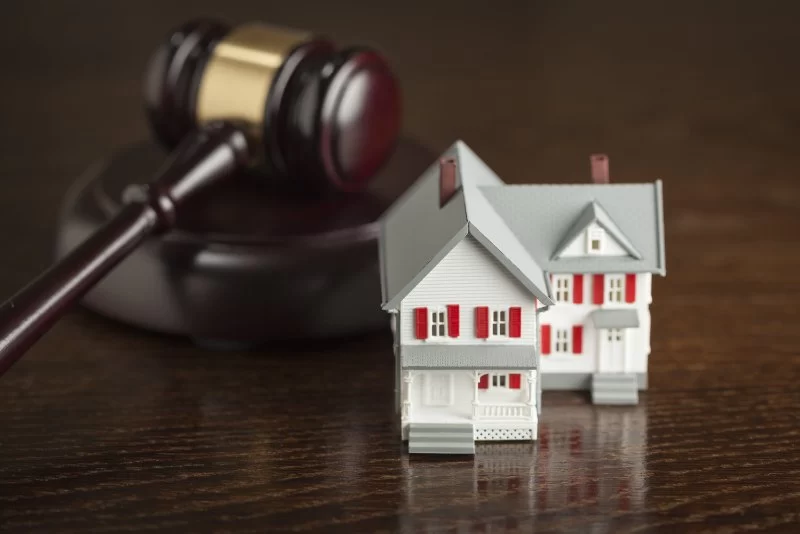
- Understanding-the-Legal-Meaning-of-Eviction
- When-and-Why-Landlords-Can-Start-Eviction
- Step-by-Step-Process-of-How-to-Legally-Evict-a-Tenant
- Legal-Notices-and-Required-Timelines
- What-Happens-in-Eviction-Court
- Tenant-Rights-and-Landlord-Responsibilities
- Real-Case-Example-of-a-Legal-Eviction
- When-to-Consult-ESPLawyers-for-Professional-Guidance
1. Understanding the Legal Meaning of Eviction
Evicting a tenant isn’t as simple as asking someone to leave your property. How to legally evict a tenant involves a formal legal process governed by state laws. Eviction means removing a tenant from a rental property through court order after proving a valid reason, such as nonpayment of rent or lease violations. Any attempt to remove a tenant without following legal procedures — like changing locks or shutting off utilities — is considered an illegal eviction and can lead to serious penalties for the landlord.
1.1 The Purpose of Legal Eviction Procedures
Eviction laws are designed to balance the rights of both landlords and tenants. They ensure that landlords can regain possession of their property while protecting tenants from unfair or sudden removal. Following the law is not just about avoiding lawsuits — it’s about maintaining professionalism and trust in the rental relationship.
2. When and Why Landlords Can Start Eviction
Landlords have the right to start eviction only under specific, legally recognized circumstances. Common reasons include nonpayment of rent, property damage, illegal activity, or violation of lease terms. However, before filing for eviction, the landlord must provide a written notice that clearly explains the issue and gives the tenant an opportunity to fix it or vacate.
2.1 Common Grounds for Eviction
- Nonpayment of Rent: The most frequent cause of eviction. Tenants are given a notice period to pay overdue rent or leave.
- Violation of Lease Terms: Such as unauthorized pets, extra occupants, or subleasing without permission.
- Property Damage or Illegal Use: Engaging in criminal activity or causing significant damage can justify immediate eviction.
- End of Lease or Owner Move-In: In some states, landlords can end the lease when the contract expires, provided proper notice is given.
Each state sets different rules for timing and documentation, so checking your local landlord-tenant laws is essential before taking action.
3. Step-by-Step Process of How to Legally Evict a Tenant
Here’s a detailed breakdown of the steps landlords should take to legally evict a tenant while staying compliant with state regulations.
3.1 Step 1: Review the Lease Agreement
Start by reviewing the signed lease for clauses related to termination, rent payments, and tenant obligations. This document forms the foundation for any legal claim.
3.2 Step 2: Provide Written Notice
The landlord must issue an eviction notice — commonly called a Pay or Quit or Cure or Quit notice — depending on the issue. It should clearly state the reason for eviction, the date by which the tenant must act, and what actions could stop the process.
3.3 Step 3: File an Eviction Lawsuit
If the tenant doesn’t comply by the notice deadline, the landlord must file a Forcible Entry and Detainer (FED) lawsuit at the local courthouse. Self-help methods, such as removing the tenant’s belongings or changing locks, are illegal without a court order.
3.4 Step 4: Attend the Court Hearing
Both landlord and tenant will have a chance to present evidence. Courts often encourage mediation, but if no resolution is reached, the judge will decide whether eviction is justified.
3.5 Step 5: Obtain and Enforce the Writ of Possession
If the court rules in favor of the landlord, a writ of possession is issued. Only law enforcement officials are authorized to remove the tenant and restore the property to the landlord.
4. Legal Notices and Required Timelines
Eviction timelines vary by state. Typically, nonpayment notices allow tenants 3–7 days to pay or move out, while other lease violations might require 10–30 days. In some states, landlords must give even longer notice for month-to-month leases. Always document notice delivery with certified mail or personal service — verbal warnings are not enough in court.
4.1 Example of a Proper Notice
“This notice serves as formal demand for payment of rent totaling $1,200, due on March 1. Payment must be made within 5 calendar days or legal action for possession will begin.” — such precise language ensures the notice stands up in court.
5. What Happens in Eviction Court
Eviction hearings are usually brief but critical. Landlords should bring lease documents, payment records, and copies of all notices. Judges will verify that the eviction followed proper procedure. If the tenant fails to appear, the landlord may win by default. However, if evidence shows retaliation or discrimination, the case can be dismissed immediately.
5.1 Tenant Defenses
Tenants can challenge an eviction by showing they paid rent, fixed the problem, or the landlord violated housing codes. Understanding these defenses helps landlords prepare their case effectively.
6. Tenant Rights and Landlord Responsibilities
Even during eviction, tenants maintain specific rights. They must receive proper notice, have an opportunity to contest the case, and cannot be locked out without a court order. Landlords, on the other hand, must maintain the property and avoid harassment. A misstep could turn a legal eviction into an unlawful one.
6.1 Protecting Both Sides
Fairness is the cornerstone of housing law. The legal eviction process exists to ensure that landlords can regain control lawfully while tenants are protected from abuse of power.
7. Real Case Example of a Legal Eviction
In 2023, a landlord in Texas filed for eviction after a tenant stopped paying rent for three months. The landlord provided a five-day notice, documented communication attempts, and filed correctly in county court. The judge ruled in favor of the landlord, granting possession after confirming all steps were followed lawfully. This case demonstrates how proper documentation and patience can ensure a smooth process — even when the situation feels frustrating.
7.1 Lessons from the Case
Eviction success depends on compliance, not confrontation. Acting calmly, following procedure, and keeping a paper trail are your best protections as a landlord.
8. When to Consult ESPLawyers for Professional Guidance
Understanding how to legally evict a tenant requires more than knowledge — it requires precision. Mistakes can cost landlords time, money, and credibility. Consulting 【ESPLawyers】 ensures every step follows state regulations and protects your rights. Whether you’re facing a complex eviction or need help drafting compliant notices, our legal experts are here to help. Let 【ESPLawyers】 guide you through the process and safeguard your property interests with professionalism and care.








